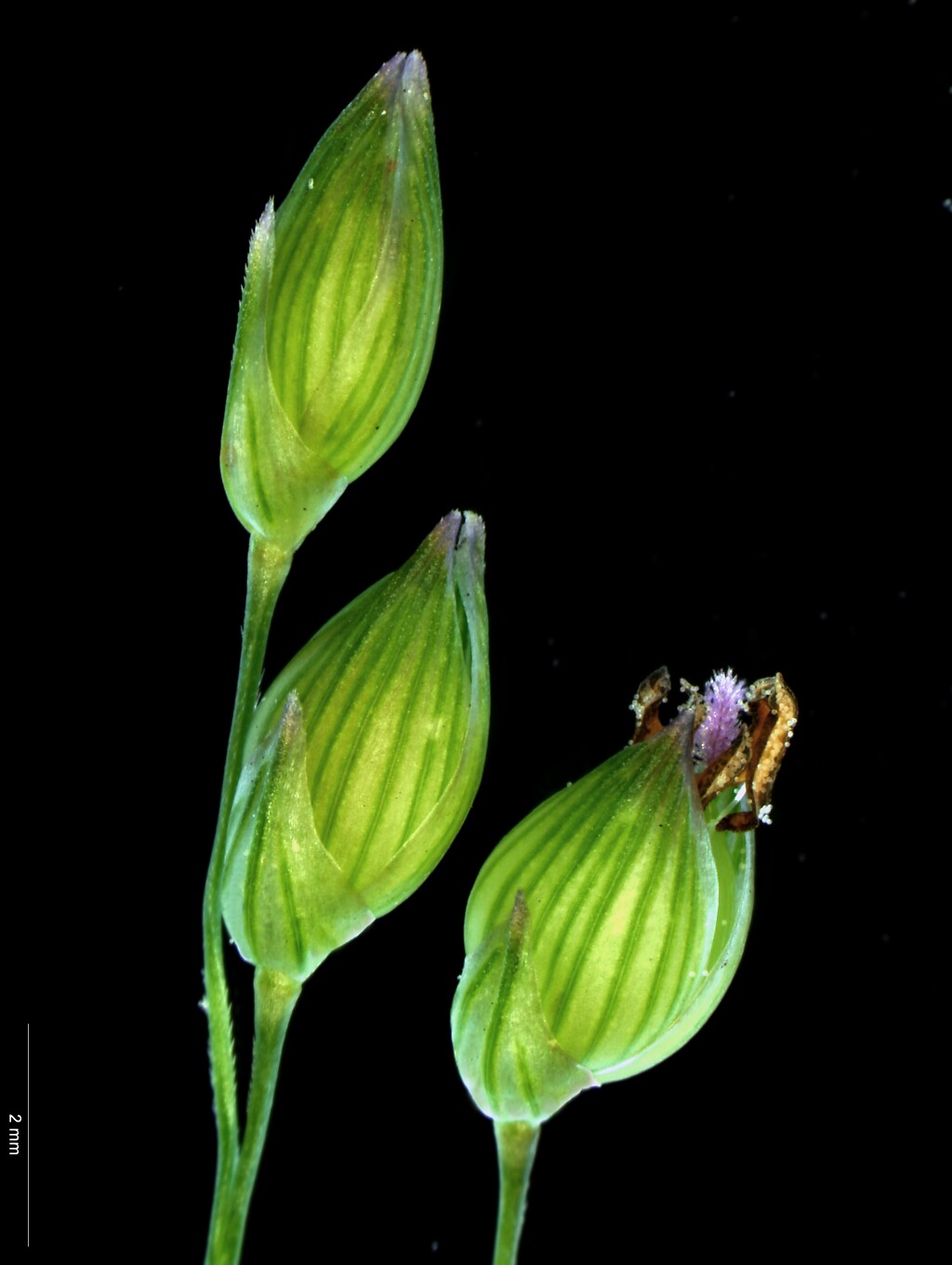Panicum miliaceum
L. Common MilletTufted annual, not or barely tussock-forming, but often several-stemmed from base; culms ascending to erect, to c. 1 m high; nodes hairy. Leaves with spreading, tubercle-based hairs on sheaths and blade margins, sometimes also on adaxial surface of blades; blade flat, to 35 cm long and 2(–3) cm wide; ligule a fringe 1.5–3 mm long, sometimes shortly membranous at base. Panicle usually dense, c. 15–30 cm long, typically drooping at maturity, sometimes remaining partially enclosed in upper leaf sheath. Spikelets 4–5.5 mm long; lower glume 5–7-nerved, ovate, acute, c. 3 mm long; upper glume 9–11-nerved, ovate, acute, as long as the spikelet; rachilla visible between glumes; lemma of lower floret equal to upper glume; palea of lower floret absent; fertile lemma obtuse, hard, shining, smooth, indistinctly nerved, c. 1 mm shorter than upper glume, dorsally rounded; palea subequal to lemma, convex. Flowers and fruits mostly Feb.–Apr.
Wim, VVP, VRiv, MuF, GipP, Gold, CVU. Occurs in all States, but not NT. Native to Europe and Asia. An occasional weed of roadsides, railways, footpaths, vacant land etc., usually as a result of discarded birdseed or spill from grain transport.
Grown primarily as grain fodder for stock and birdseed. The grain does not contain gluten and is sometimes used as a wheat substitute in gluten-free products.
 Spinning
Spinning



